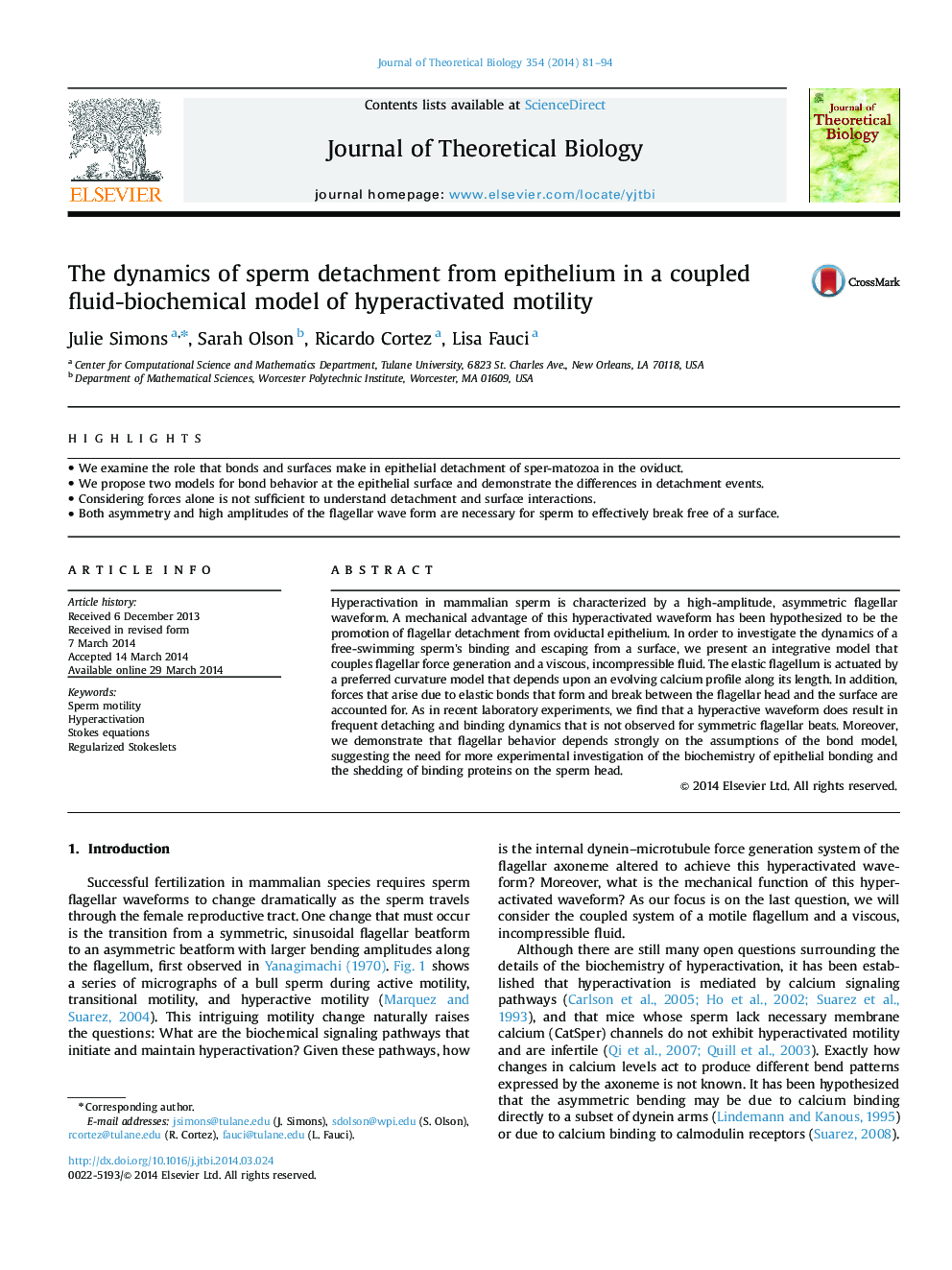| Article ID | Journal | Published Year | Pages | File Type |
|---|---|---|---|---|
| 4496179 | Journal of Theoretical Biology | 2014 | 14 Pages |
•We examine the role that bonds and surfaces make in epithelial detachment of sper-matozoa in the oviduct.•We propose two models for bond behavior at the epithelial surface and demonstrate the differences in detachment events.•Considering forces alone is not sufficient to understand detachment and surface interactions.•Both asymmetry and high amplitudes of the flagellar wave form are necessary for sperm to effectively break free of a surface.
Hyperactivation in mammalian sperm is characterized by a high-amplitude, asymmetric flagellar waveform. A mechanical advantage of this hyperactivated waveform has been hypothesized to be the promotion of flagellar detachment from oviductal epithelium. In order to investigate the dynamics of a free-swimming sperm׳s binding and escaping from a surface, we present an integrative model that couples flagellar force generation and a viscous, incompressible fluid. The elastic flagellum is actuated by a preferred curvature model that depends upon an evolving calcium profile along its length. In addition, forces that arise due to elastic bonds that form and break between the flagellar head and the surface are accounted for. As in recent laboratory experiments, we find that a hyperactive waveform does result in frequent detaching and binding dynamics that is not observed for symmetric flagellar beats. Moreover, we demonstrate that flagellar behavior depends strongly on the assumptions of the bond model, suggesting the need for more experimental investigation of the biochemistry of epithelial bonding and the shedding of binding proteins on the sperm head.
